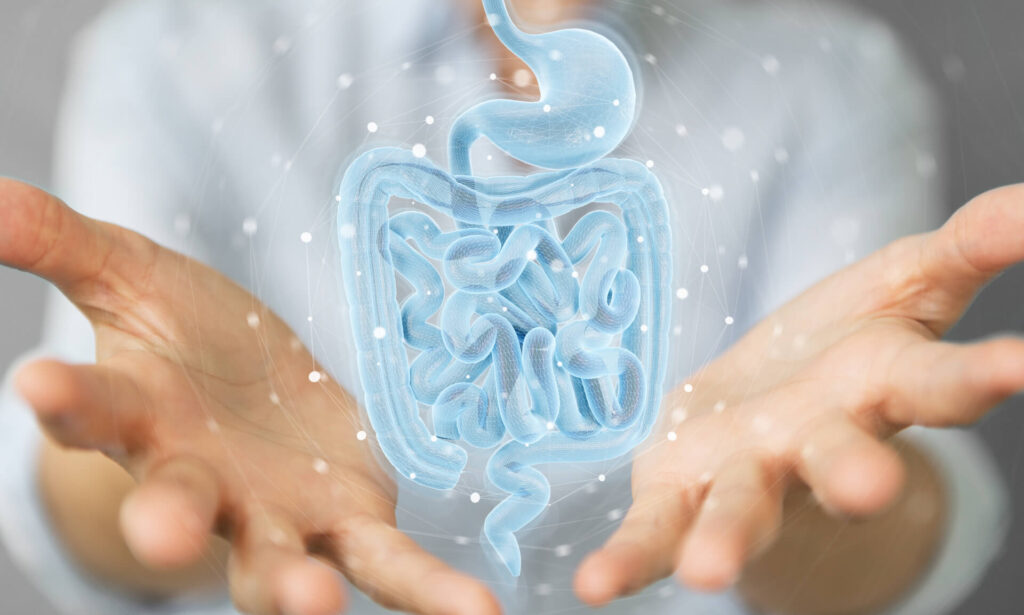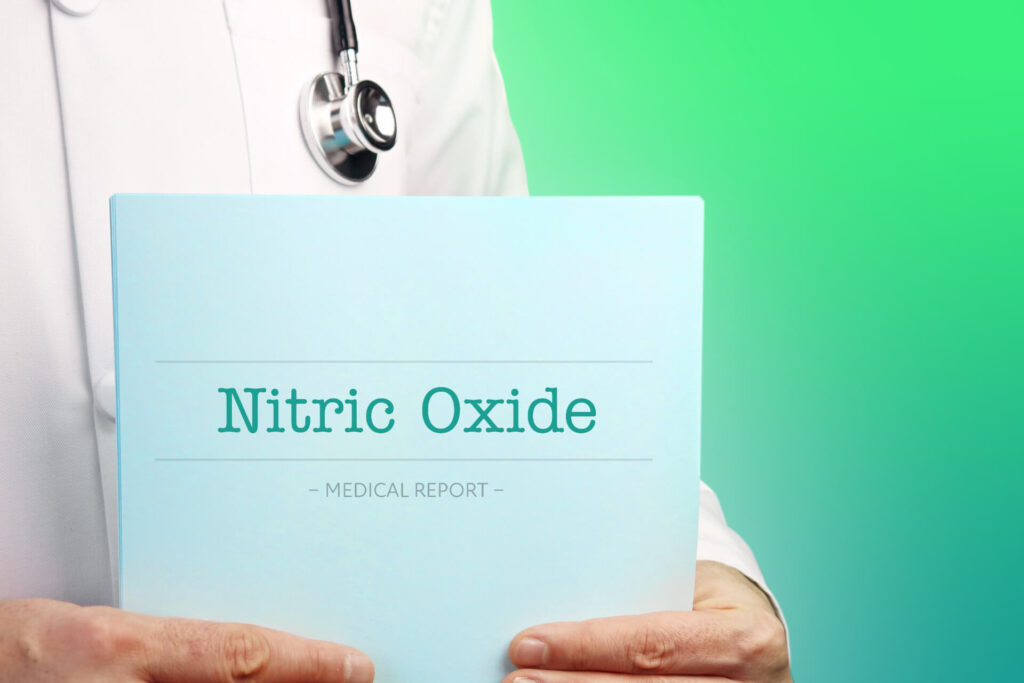Inflammation is the universal response of your immune system to any breach, damage or insult to your body. Whether you step on a nail, have an infection or allergic reaction, your inflammatory response is what heals you.
But too much of a good thing always creates harm. When that acute inflammatory reaction drags on for months to years, it becomes the number one killer worldwide! According to the WHO, more than half of daily global deaths are caused by chronic inflammatory diseases like heart disease, dementia, diabetes, cancer, chronic pain, and autoimmune disorders. .
This article will briefly overview your immune/ inflammatory system, introducing you to some key players. We will review some of the major causes of chronic inflammation. Empowered with this understanding, we’ll explore 8 actionable strategies to reduce chronic inflammation and restore your body to Balance.
Understand who and what you are because change begins with understanding.
Let's get started:
- Acute vs Chronic Inflammation: Key Differences
- Chronic Inflammation:Diagnosis
- Eight Steps to Reduce Chronic Inflammation
- 1) Create a Healthy Microbiome
- 2) Eat more Anti-inflammatory Fats and Protein
- 3) Boost your Mitochondria
- 4) Be Active in your Daily Life
- 5) Cultivate your Destressors
- 6) Find your Why
- 7) Eliminate Toxins
- 8) Use Sunlight Therapy
Acute vs Chronic Inflammation: Key Differences
Inflammation is your immune system’s universal response to any breach, damage or insult, whether from a burn, cut, infection, fighting cancer or allergic reaction. Any potential damage or danger to the integrity of your body triggers inflammation. An inflammatory response is key to your survival.
Whether from a nail puncture or a viral infection, millions of your cells rupture, releasing billions of normally intracellular molecules into the surrounding tissue. These intracellular molecules act as signalling agents that, simply put, shout out, “Whoa, we are dying over here! Bring in the reinforcements.” This triggers what we call the inflammatory cascade.
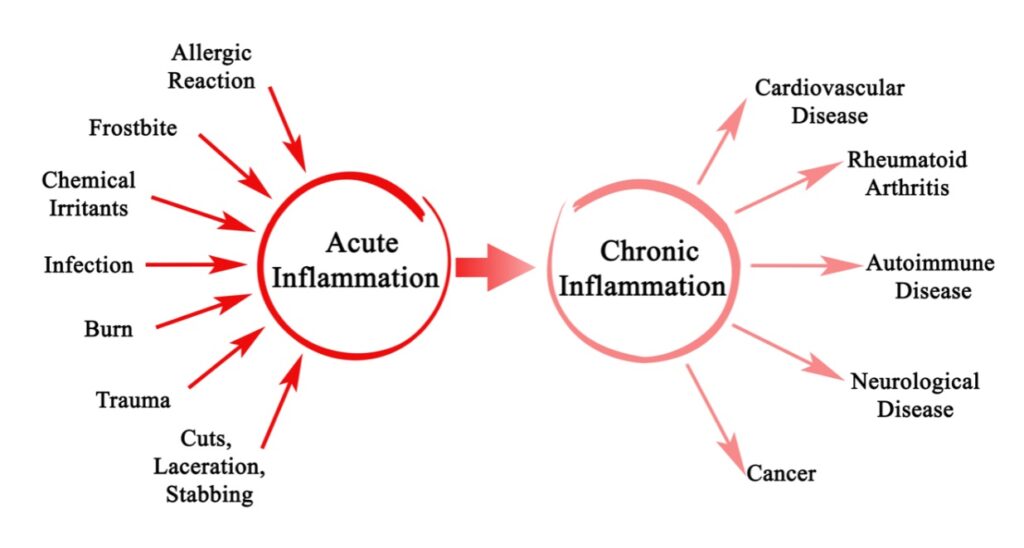
Tiny localized blood vessels dilate and become leaky, allowing your immune system’s first responders – macrophages and neutrophils to flood in. Macrophages and neutrophils are like pacmen; they gobble up invading pathogens and all your damaged and dying cells.
Leaky vessels and the influx of immune reinforcements cause the classic signs of acute inflammation: Pain, Swelling, Heat, and Redness.
Eventually, in most cases, your immune cells get their job done, the wound heals, the virus is gone, and your immune cells return to their regular jobs, patrolling your body for other invaders. Some surviving cells develop a memory of the invader, becoming Memory Cells. These cells are primed and prepared if the pathogen returns. Our bodies are amazing!
So acute inflammation is essential for survival, but it is a finite event lasting days to weeks.
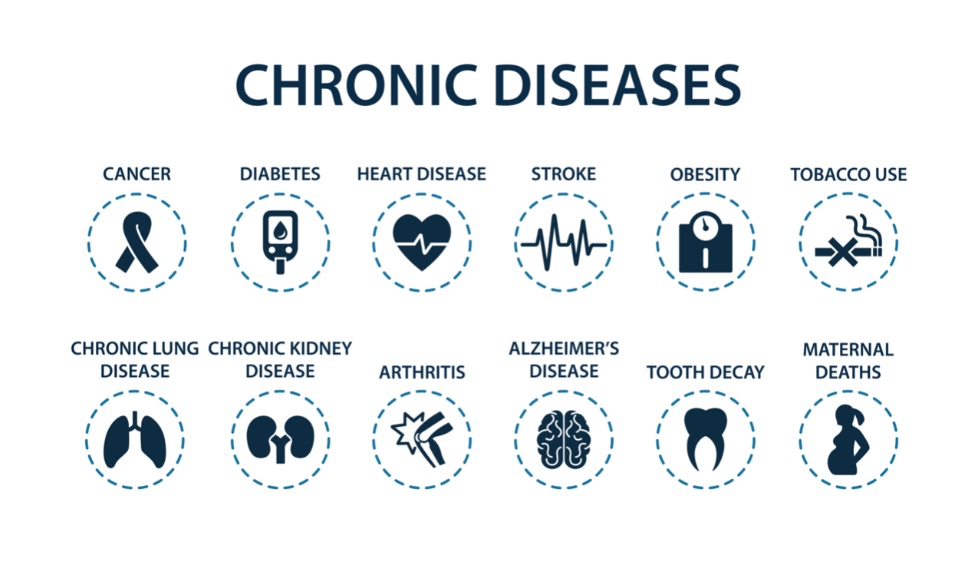
However, when it becomes chronic, the immune system dysregulates, and your immune cells can mistakenly attack normal, healthy tissues, leading to organ and tissue damage and the progression of chronic diseases.
While exact triggers for chronic inflammation aren’t entirely understood, certain conditions can exacerbate it. These include infections, autoimmune disorders, mitochondrial dysfunction, irritant exposure, obesity, chronic stress, poor diets, inactivity, insufficient sleep, and genetic factors. Chronic inflammation significantly contributes to and often underlies diseases like diabetes, heart attacks, strokes, cancer, Alzheimer’s, and autoimmune disorders.
Chronic Inflammation Diagnosis
The hallmark symptom of chronic inflammation, an energy-intensive process, is fatigue beyond the norm for one’s age and health. Other symptoms may include persistent joint or muscle pain, stiffness, and recurring allergic reactions. Skin conditions like eczema, psoriasis, and abdominal discomfort (pain, bloating, and diarrhea) can also be linked.
A blood test for high-sensitivity C-reactive protein (hsCRP) levels is a cost-effective marker for systemic inflammation. While an elevated hs-CRP level indicates inflammation, it can also stem from recent injuries or illness.
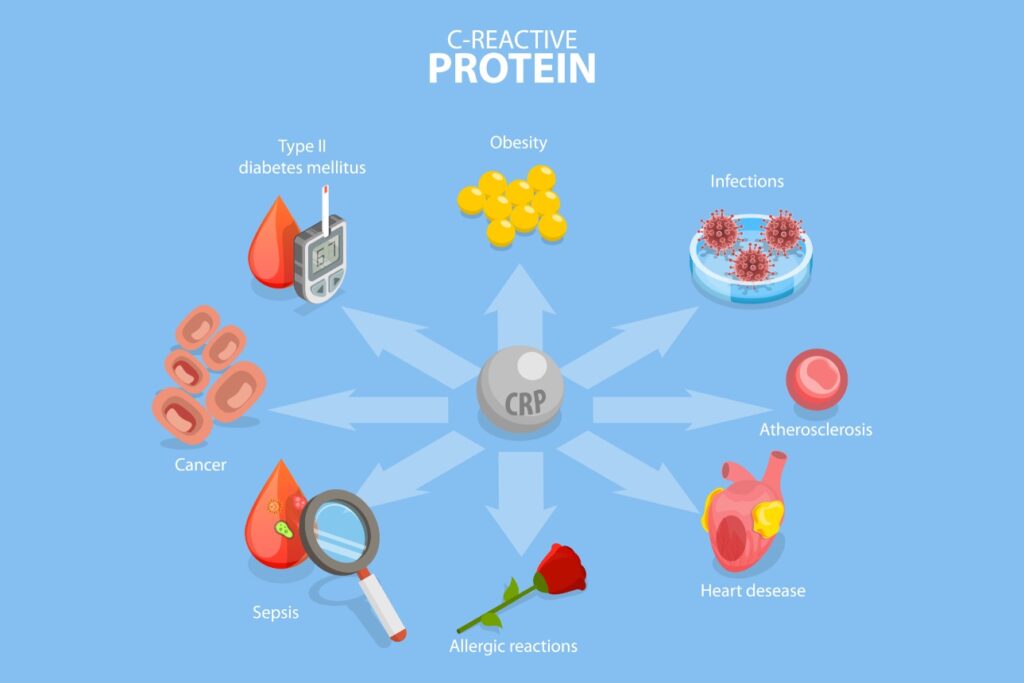
8 Steps to Reduce Chronic Inflammation:
Now that you have a basic understanding of inflammation, you can visualize to actualize these 8 concrete steps, or “pillars,” that form a comprehensive approach to reducing chronic inflammation. Many of these strategies have been discussed in more detail in our previous blogs, so we’ll refer you to those for in-depth information.
1) Create a Healthy Microbiome
Why It Matters: With a staggering 70-80% of your entire body’s immune cells located in your intestines alongside the epicentre of your microbiome, creating a healthy microbiome is key to reducing chronic inflammation.
Your microbiome (home to bacteria, fungi, and viruses) plays a central role in training your immune system to discern friend from foe. By fermenting the fibre you provide, your microbiome also produces short-chain fatty acids that regulate and fine-tune your immune response, including fostering regulatory T-cells, which suppress excessive immune reactions.
Action Steps:
–Cultivate Diversity: A diverse microbiome is unanimously recognized as a hallmark of a healthy microbiome.

Eat a variety of MACs (Microbial Available Carbohydrates) by choosing whole, minimally processed foods like fruits, vegetables, legumes, and whole grains. These fibre-rich choices not only fuel your microbiome but also promote vital diversity. For additional tips on cultivating a healthy microbiome, click here.
-Avoid Refined Sugars and Grains: Avoid processed carbs, sugars, and refined grains. These high glycemic foods are swiftly absorbed in the small intestines, leaving nothing to feed your microbiome in your large intestines. What does your microbiome feed on if it has no food? You! A thick mucosal layer between your intestinal lining and your microbiome acts like a barrier. Studies show (1) that when there is no fibre for the microbiome to feed on, they begin to digest this mucosal barrier, ultimately getting closer and inflaming your intestinal lining.
-Beware of Processed Foods: They can contain emulsifiers that harm your microbiome and preservatives that, under certain conditions, may cause cancer.
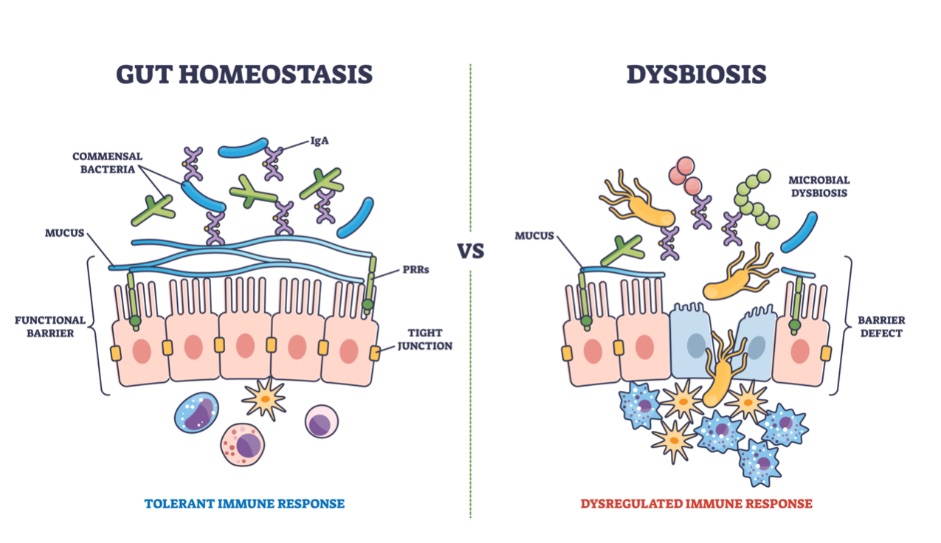
2) Eat more Anti-inflammatory Fats and Protein
Why It Matters: Your cell walls primarily consist of fats, and the fats making up those cell walls matter as they send signals to your patrolling immune cells. Omega-6 signals inflammation, while Omega-3 promotes anti-inflammatory responses. Both are essential, but our typical diet tilts this balance to 20:1 omega-6 to omega-3 in favour of inflammation. Omega-9 in olive and avocado oil is highly anti-inflammatory.
Action Steps:
-Prioritize Omega-3 and Omega-9 Fats: Prioritize Omega-3 and incorporate olive and avocado oils for an anti-inflammatory diet. Use extra virgin olive oil for low to medium heat (smoke point: 375°F to 410°F or 190°C to 210°C), and opt for high-smoke-point avocado oil (smoke point: 375°F to 520°F or 190°C to 270°C) for higher heat cooking methods.
-Shift Towards a more Plant-Based Diet: Processed meats and high-saturated fat animal proteins tend to be more inflammatory than plant-based proteins. Cooking methods like grilling, frying, and roasting generate pro-inflammatory compounds. Choose wild, omega-3-rich fish like mackerel, sardines, herring, or salmon if you eat fish. If consuming red meat, opt for game or grass-fed lean options. Grass-fed meat is higher in omega-3 fats compared to grain-fed varieties.
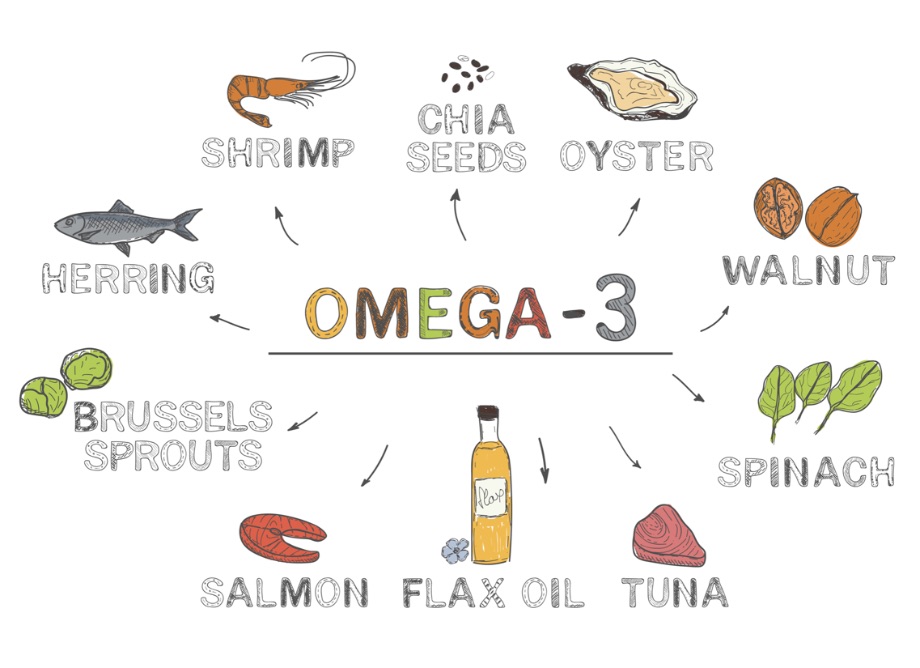
3) Boost your Mitochondria
Why It Matters: Mitochondria, the cellular powerhouses, play a pivotal role in fending off and inciting chronic inflammation. Their efficiency directly impacts your well-being, influencing energy levels, vitality, and overall health.
During ATP production, mitochondria create free radicals or oxidants—highly reactive particles missing electrons. These particles roam cells, seeking electrons for neutralization. If left unchecked, they can lead to substantial cellular damage. Free radicals can rip electrons off proteins and DNA, altering their three-dimensional shape and, consequently, their function. In cases of excessive free radicals (oxidative stress), they can even distort the shape of cells. Since immune cells identify ‘self’ and ‘non-self’ partially based on these 3D shapes, highly altered cells may be targeted, potentially resulting in chronic inflammation.
Action Steps:
-Neutralize Free Radicals with Antioxidants: Flood your cells with antioxidants—molecules willing to give up electrons. Incorporate a variety of antioxidant-rich foods such as fruits, vegetables, legumes, nuts, whole grains, green tea, dark chocolate, and spices like turmeric, cinnamon, ginger, and garlic. Opt for diverse, colourful fruits and vegetables to ensure a spectrum of antioxidant benefits.
-Boost Mitochondrial Efficiency: By giving your mitochondria plenty of antioxidants, you can make them work better. Additionally, because mitochondria have their own DNA passed down from your mother through the egg, you can increase the number of mitochondria in each cell by applying controlled short-term stress—hormesis.

By nudging your mitochondria out of their comfort zone, short-controlled stress encourages the creation of additional mitochondria and replaces damaged or dysfunctional ones. Effective methods include exercise, cold water immersion, and intermittent fasting. For specific recommendations, [learn more here].
4) Be Active in your Daily Life
Why It Matters: Boost your vitality and combat chronic inflammation through regular activity! Exercise enhances mitochondrial function and triggers the release of anti-inflammatory markers like IL-6. Movement, coupled with proper hydration, helps detoxify your body.
Action Steps: Transition to a more active lifestyle by making small, consistent changes in your daily routine. Remember, it’s not about adding an hour of exercise to your sedentary life; it’s about embodying an active lifestyle. Small changes count. Take the stairs instead of the elevator, opt for TGIF at the beach or park, and bust some dance moves into your chores. Engage in activities that inspire you and keep you on your feet. Transform ‘exercise’ into an invigorating way of life. Get up and move. (Learn More)

5) Cultivate your Destressors
Why it matters Chronic stress triggers inflammation by releasing cortisol and adrenaline, initiating the ‘fight or flight’ response. While crucial for immediate survival, prolonged exposure leads to an overactive immune system, disrupted blood sugar, and heightened cellular oxidative stress. This stress also impacts the gut microbiome, causing dysbiosis—an imbalance of gut bacteria—and increased intestinal permeability, fueling chronic inflammation.
Action Steps: Prioritize stress management and activities that bring relaxation and rejuvenation. Whether it’s mindfulness practices like meditation or yoga, engaging in hobbies, or spending time in nature, find what truly calms and revitalizes you. Incorporate these rituals into your daily/weekly routine and make them non-negotiables. Discover and nurture your destressors—it’s an investment in long-term health and vitality.
6) Find your Why
Why It Matters: Discovering and embracing your purpose in life offers profound health benefits. Research indicates that living with purpose is associated with increased longevity, lower rates of heart disease and depression, and improved cancer survival rates. When we are part of something greater, our daily demands and worries diminish in importance. Their ability to stress us, depress us, subsides.

Action Steps:
– Embark on a Journey of Self-Discovery: Begin by exploring your passions, values, and interests. Identify activities that bring you joy and a sense of fulfillment. Reflect on moments in your life that held particular meaning.
– Envision Your Legacy: Consider the legacy you wish to leave behind. Envision the impact you want to have on the world and the people around you.
– Align Activities with Your ‘Why’: Engage in activities that resonate with your reflections. This could involve volunteering, pursuing a hobby, or setting personal goals. Each step towards your purpose leads to fulfillment and a more balanced state of well-being.

Here are some tools to get you started
7) Eliminate Toxins
Why It Matters: Every day, we face a barrage of external toxins, including pollutants, smoke, alcohol, pesticides, and microplastics, disrupting our body’s balance and fueling inflammation. Our bodies also generate internal toxins during regular metabolism. Combatting both requires a multifaceted approach.
Action Steps:
– Prioritize Hydration: Inadequate hydration affects a significant portion of adults. You need to be hydrated to flush out those toxins. Kickstart your day with water before your morning coffee, hydrate during breaks, and have water before any evening alcohol. Aim for a pre-meal water intake 30 minutes before eating to enhance digestion enzyme function and promote a feeling of fullness. Do not drink excessive water just before meals for optimal stomach acid and enzyme function.

– Boost Nitric Oxide Levels: Improve blood flow by boosting Nitric Oxide levels. This aids in nutrient delivery and waste removal.(learn more here).
– Get Better Sleep: Like all tissues in your body, your brain requires nourishing nutrients and toxic byproducts removal to function properly. Sleep is central in clearing toxins, including B-amyloid, associated with Alzheimer’s. (learn more here)
– Adopt a Holistic Approach: Protect yourself from external toxins by prioritizing organic, whole foods and eco-friendly cleaning products. Ensure proper home ventilation and invest in water filters and non-plastic food storage. Reduce alcohol intake and avoid combustible tobacco and cannabis. Opt for non-toxic personal care products and improve indoor air quality with purifiers and plants. When choosing furniture, opt for natural, low-VOC materials.
– Leverage EWG Resources: The Environmental Working Group (EWG) provides valuable information on toxins in various aspects of life, from food to cosmetics. Utilize their app, which rates more than 120,000 food and personal care products. (EWG)
8) Use Sunlight Therapy
The documentary “Blue Zones” sheds light on keys to a longer, healthier life but overlooks a vital aspect: sunlight exposure! All original Blue Zones thrive in sun-drenched regions, reaping benefits beyond just a prolonged planting season. It’s about tapping into the healing potential of sunlight!
Why it Matters: Residing at higher latitudes heightens the risk of cancers like lymphoma, breast, ovarian, colon, pancreatic, and prostate. Moving away from the equator also raises the likelihood of MS, diabetes, metabolic syndrome, and heart ailments. Interestingly, the peak seasonal heart attack risk falls just before Christmas in northern latitudes—coincidence or tied to the winter solstice?

Action Steps:
– Optimize Sun Exposure: Prioritize daily sunlight exposure for these myriad anti-inflammatory benefits. It boosts Vitamin D, a potent anti-inflammatory, stimulates Nitric Oxide production, regulates circadian rhythms, improves sleep, uplifts mood, and enhances energy levels.
– Explore Personalized Tips: For tailored advice on optimizing your sunlight therapy and minimizing its harm, visit our detailed blogs [8 Ways to Use Sunlight Therapy] & (Sunlight: Why a Balanced Approach is Essential). Discover how harnessing sunlight’s potential can lead to a healthier, more vibrant you.
Putting it All Together
Reducing chronic inflammation is the cornerstone of a longer, vibrant, healthier life. It’s staggering that chronic inflammation accounts for over 50% of daily global deaths. The good news, you can reduce it! By adopting these eight proactive steps—nourishing your microbiome, fortifying your mitochondria, staying active, nurturing your destressors, discovering your purpose, eliminating toxins, and harnessing the therapeutic power of sunlight—you are changing the course of the future you.

These lifestyle changes reduce chronic inflammation, improve your mood, energy and vitality. Adopt these changes for a more vibrant you. Life is a Journey, Let Health be Your Guide.
References
1) Fiber Famished Gut Microbes linked to Poor Health
2) The Interplay between the Gut Microbiome and the Immune System..
3) Is Mitochondrial Dysfunction a Common Root of Noncommunicable Chronic Diseases
5) Fifteen Ways to Feed your Gut Flora
6) Amazing Facts about your Microbiome
8) The Powerhouse Within: How to Boost your Mitochondria
9) Made some Nitric Oxide Lately?
10) The Science of Sleep: 5 Lifestyle Adjustments for Better Sleep


